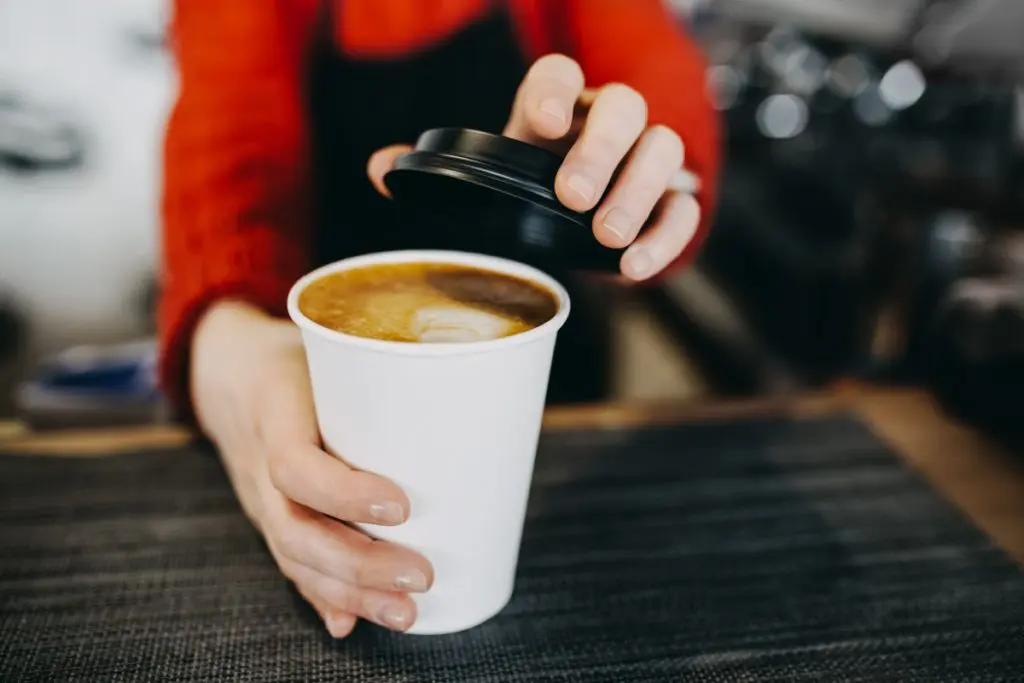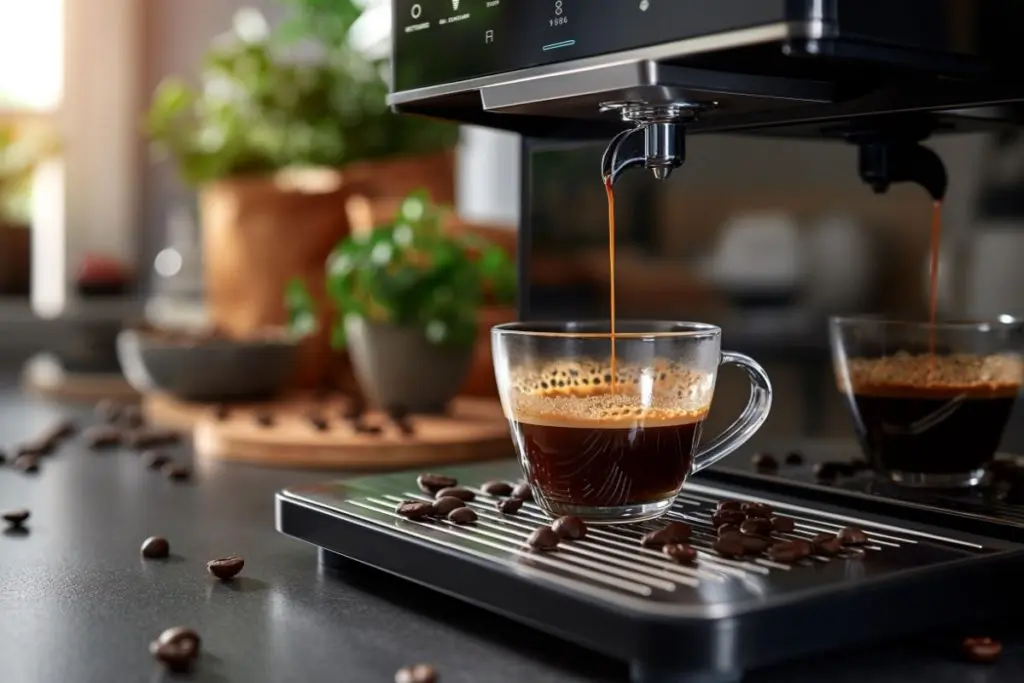Did you know that coffee is the third most consumed non-alcoholic beverage in the world? It’s no wonder it ranks so high when over 2.25 billion cups are consumed daily around the globe.
Many of us probably don’t even remember how we got hooked on coffee, but my addiction really took off when I started working as a barista during my college years. With so many options to choose from, I remember slinging back three, four, and sometimes five cups a day, especially during exam season.
While my coffee was usually on the house, most consumers pay for their daily cups of joe – often at a hefty price for specialty coffee with all the fixings. But how much of a hole is your daily coffee consumption really burning in your pocket? And are there ways to cut back on the cost without sacrificing any of the flavor?
We spill the beans below.
Consumption of Coffee
I’m not an early bird, and I’ll be the first to admit that my morning coffee is what I look forward to most. But I know I’m not alone in this, and the statistics definitely back me up.

Here’s the tea on how much we really consume and spend on coffee:
- Americans drink 400 million cups of coffee every day, or 146 billion cups a year
- The U.S. is one of the top-ranking countries for coffee consumption, with Michigan being the number one state
- 51% of people buy a cup of coffee from a shop at least once a week
- Americans spend around $21 a week on caffeinated drinks from coffee shops – that’s over $1,000 a year
- People who make their coffee at home only spend around $75 annually on coffee
- The average American consumes around three cups of coffee a day – that’s around nine pounds per person every year
- 83% of Baby Boomers, 74% of Gen X, 66% of Millennials, and 42% of Gen Z drink coffee daily
- 65% of Americans drink coffee daily vs. only 55% that drink bottled water a day
Historical Background of Coffee
Let’s take a step back and look at how this addictive, expensive drink got started.
It begins with the infamous tale of the goat herder. Back in 9th-century Ethiopia, Kaldi noticed his goats received a jolt of energy when they ate a certain type of berry (you guessed it – the coffee bean). Kaldi dumped a handful in his mouth.
I’m guessing his pupils dilated, and he herded more goats than ever before.
It didn’t take long for his magic elixir to spread across the globe, reaching Europe within eight hundred short years.
In the modern era, coffee really took off in the 19th and 20th centuries when technology caught up with a worldwide addiction. Everything from processing to packaging to brewing became easier.
Now, of course, the bean juice is available at every corner.
Economics of a Cup of Coffee
More than just being the favored drink by most people around the world, coffee production plays a large role in the economy of developing countries. South America, namely Brazil, is the largest coffee producer, with around four million tons produced in 2023. Around 20 to 25 million families worldwide make a living by growing and working in the production of coffee.
While coffee production primarily occurs in developing countries, most of the consumption takes place in industrialized countries. So, your daily cup (or cups) of joe plays a larger role in the economics of coffee production worldwide.
In 2023, the U.S. coffee market generated $80 billion in revenue, and globally, it generated $127 billion in 2022. But what goes into producing coffee? First, conditions must be ideal for coffee plants to grow. It takes around three to four years for a plant to produce fruit or cherries. Once the cherries are ripe, they are harvested, processed, and dried.
The processed beans (called green coffee) are exported to coffee roasters worldwide. After receiving these shipments of green coffee, the beans are roasted, packaged, and distributed to coffee shops.
A lot of labor goes into producing your coffee, and so does a lot of money. Exporting green coffee costs around $3 per pound, and after exporting and roasting, the costs could rise to $8 or more per pound. To maintain profit margins, roasters often sell a pound of beans for upwards of $9. Factoring in all the costs of running a coffee shop, retailers only make about $2.90 of net profit per pound.
How to Cut Coffee Costs
The coffee industry is undoubtedly a booming and lucrative industry, but spending over $5 a day on specialty coffee can add up quickly for the average coffee enthusiast. Even with just one cup a day, you’re shelling out nearly $2,000 a year.

Instead, you could try these cost-effective ways to save on coffee:
- Keurig: Not too long ago, Keurigs were the hottest appliance on the market. And they still are, offering more size options, K-cup flavors, and even machines that do hot and cold drinks in one. Specialty Starbucks drinks cost around $4 to $5, but you can get your favorites for a lot cheaper at home with a Keurig. Aside from the one-time machine investment ($60 for a base model), you’ll be spending around $30 for 40 Starbucks K-cups – that’s around $1.33 for each cup of coffee.
- Nespresso: If you’re more of a specialty coffee drinker (we’re talking cappuccinos and lattes), you could save by switching to an at-home Nespresso machine. Like a Keurig, your initial cost may be a little steep (around $75 for a basic model), but you’ll be saving in the long run because you’ll only need to buy the pods. And with so many flavor, roast, and brand options to choose from, you’ll never get tired. You can get a pack of 40 specialty reserve espresso pods for around $40 – that averages to $1 a latte.
- Pour-overs and French presses: For coffee drinkers who appreciate more simplicity, you can get a quality pour-over or French press for around $30 and brew your own drip coffee at home. You can grab a bag of beans from any specialty coffee roaster in your area – they’ll even grind the beans for you, so you don’t have to invest in a grinder. It’ll cost you anywhere from $20 to $30 for a 12-ounce bag, and you can make around 24 cups with it – averaging to $1.20 for a cup.
- Cold Brew: I know some people exclusively drink iced coffee (even in the cold) – and for you, I have a simple cold brew recipe that only requires a 12-ounce bag of your preferred medium to dark roast beans, a cheesecloth, and a grinder. The most costly investment here is going to be the grinder (I would suggest an automated one to make the process faster), which will be around $20 for the cheapest option. Start by coarsely grinding your beans and combine with cold water – use a 1:2 ratio. So, for 12 ounces of ground coffee, you’ll want 24 ounces of water. Stick the mixture in the fridge for at least 12 hours but no more than 16. Strain the mixture through your cheesecloth to separate the grounds. As mentioned above, a 12-ounce bag can yield around 24 cups – averaging around $1.20 for a cup of cold brew.
- Homemade syrups: Most coffee shops charge an extra fee if you want flavored drinks, averaging around $7 a cup. But you can make almost any flavor at home or buy it in bulk one-liter bottles. Most flavors start with a basic simple syrup mix, which involves heating equal parts sugar and water. You could get fancy and add vanilla or hazelnut extract to it. If you prefer to purchase a ready-made option, my go-to is Monin syrup. They have all kinds of flavors you can dream of, from caramel and butterscotch to lavender, for around $11 a liter. For chocolate lovers, you can purchase Nutella or a 16-ounce bottle of Ghiradelli syrup for $6 and dilute it with some milk to make it homemade. Mix it with your pour-over or French press drip coffee, or make it iced with your cold brew.
- Single- and double-shot espresso machines: For the extreme coffee drinkers who need their espresso kick, you’ll likely splurge a little for an initial investment in a single- or double-shot machine. The cheapest option ranges around $135. But after you buy the machine, your only ongoing cost is the bag of beans. A 12-ounce bag will cost around $20, and you’ll get around 17 shots. That’s roughly $1.17 a shot. You can even get a hand-held milk frother for $7 and make your own lattes and cappuccinos.
Final Thoughts
It is clear that coffee is a popular beverage consumed worldwide, and this number is only going to continue to grow. But you may want to save on the amount you spend on it. Luckily, there are various cost-effective ways to enjoy your daily cup of coffee without breaking the bank or skimping on taste.